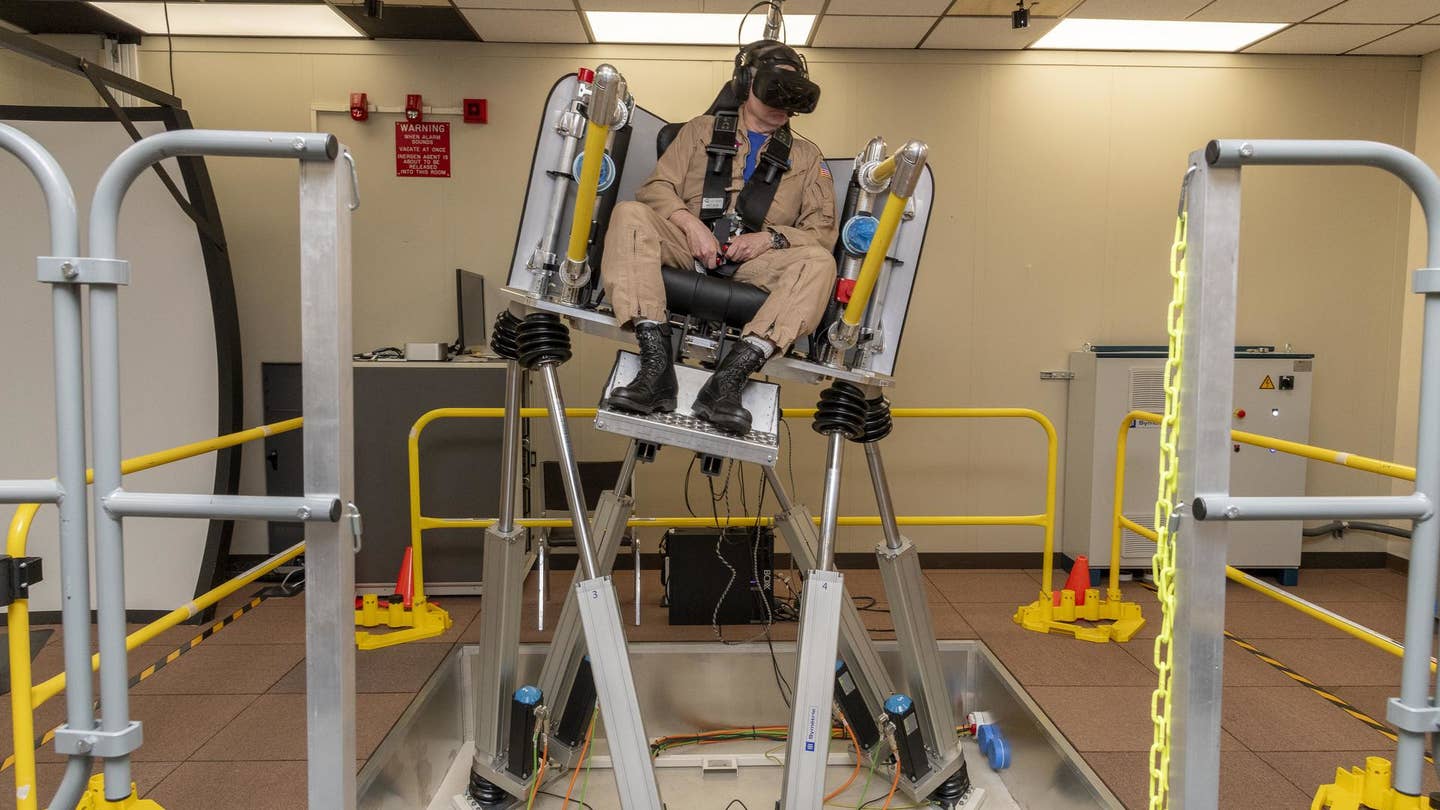NASA to Study Air Taxi Turbulence Using Human Test Subjects
The space agency works with a range of manufacturers and other stakeholders in the advanced air mobility (AAM) industry to guide aircraft design and operation.

NASA test pilot Wayne Ringelberg tests the agency’s air taxi simulator at the Armstrong Flight Research Center in Edwards, California, in March. [Courtesy: NASA]
Over the next four years, NASA is preparing to put human test subjects in the seat of an air taxi virtual reality flight simulator.
Test rides on the six-axis simulator are meant to simulate the flight of electric vertical takeoff and landing (eVTOL) aircraft in order to help NASA study turbulence on planned air taxi services in New York, Chicago, Los Angeles, and elsewhere in the U.S. The data will be shared with AAM industry partners to help them develop passenger-friendly designs.
The space agency is working with several major air taxi developers through its advanced air mobility (AAM) mission, including Archer Aviation, Joby Aviation, and Boeing eVTOL arm Wisk Aero, to research the experience and safety of riders as well as onlookers on the ground.
“The experiments in the ride quality lab will inform the advanced air mobility community about the acceptability of the motions these aircraft could make, so the general public is more likely to adopt the new technology,” said NASA test pilot Wayne Ringelberg.
Ringelberg served as the passenger for the comfort experiment. The pilot recently flew a series of test rides on the new simulator at NASA’s Armstrong Flight Research Center in Edwards, California, to help prepare it for trials with actual test subjects.
Ringelberg lifted off from a NASA-designed conceptual vertiport atop a downtown San Francisco parking garage, flying over the city to another virtual takeoff and landing site on top of a skyscraper. Sitting in a seat mounted on a six-axis platform that recreates the full range of motion of an air taxi ride, he wore headphones to simulate noise and VR goggles that gave him a view of the cockpit and the city below.
Following the flights, Ringelberg reported to NASA on how realistic and reliable the simulator’s movement and audiovisual cues were.
“This project is leveraging our research and test pilot aircrew with vertical lift experience to validate the safety and accuracy of the lab in preparation for test subject evaluations,” he said.
With Ringelberg’s work finished, the agency will soon begin testing with human subjects. They will similarly wear a VR headset and headphones, flying the same route as the NASA test pilot. During the flight, subjects will press a button to indicate discomfort.
The space agency will analyze those responses and try to match them to the user’s heart rate, breathing rate, and experience of motion or audiovisual stimulus. It will make that data available to air taxi manufacturers and other industry stakeholders to shape flight paths through cities, identify takeoff and landing spots, and guide air taxi design elements like window size and seat placement.
The air taxi simulator is the key component of NASA’s rider quality lab, but that project is itself only a tiny piece of the agency’s AAM mission.
It began using the term AAM in 2020 and has since worked with stakeholders across the industry on a wide range of projects. The initiative focuses on everything from air taxi safety and ride quality to travel time, automation, and infrastructure such as vertiports, preparing industries including healthcare, emergency response, and cargo delivery for the introduction of the novel aircraft.
Within the program is the Advanced Air Vehicles Program (AAVP), which focuses on innovative aircraft designs such as Revolutionary Vertical Lift Technology (RVLT). In addition to passenger comfort, NASA under the RVLT umbrella has studied air taxi batteries, noise, and traffic, particularly around busy airports like Dallas-Fort Worth International Airport (KDFW).
Urban air traffic management and the integration of eVTOL designs into air traffic control operations and the national airspace system is a major part of the space agency’s mission. It aims to complete its research in time for the U.S. to develop a robust air taxi industry by the end of the decade.
Like this story? We think you'll also like the Future of FLYING newsletter sent every Thursday afternoon. Sign up now.

Sign-up for newsletters & special offers!
Get the latest FLYING stories & special offers delivered directly to your inbox






